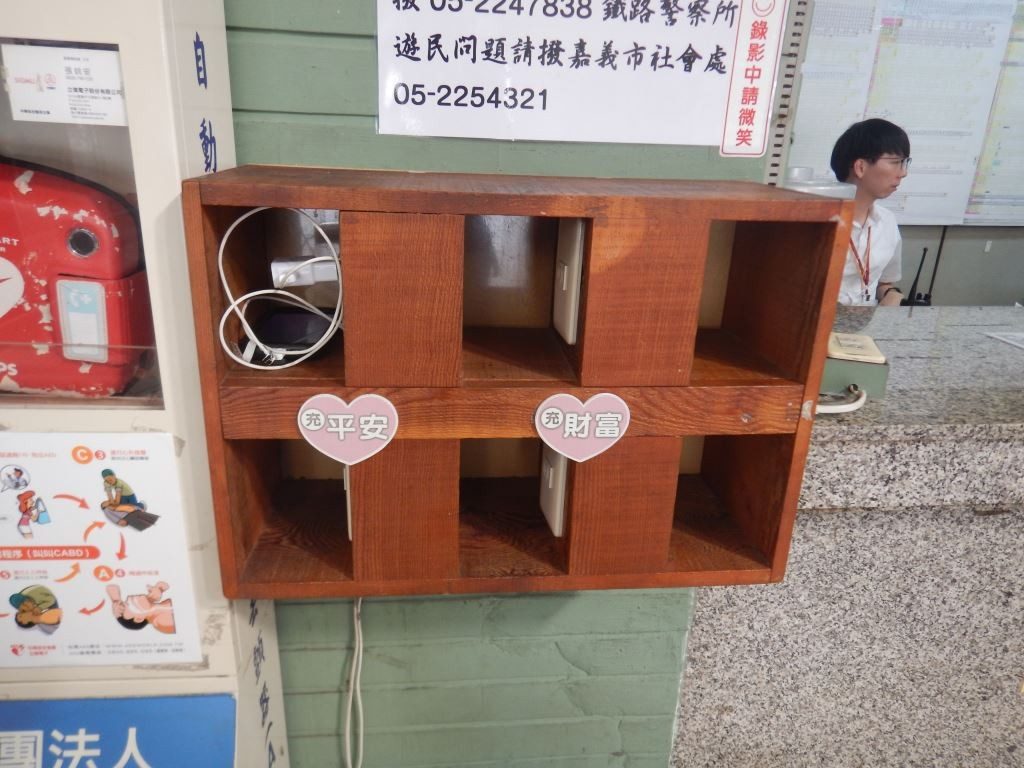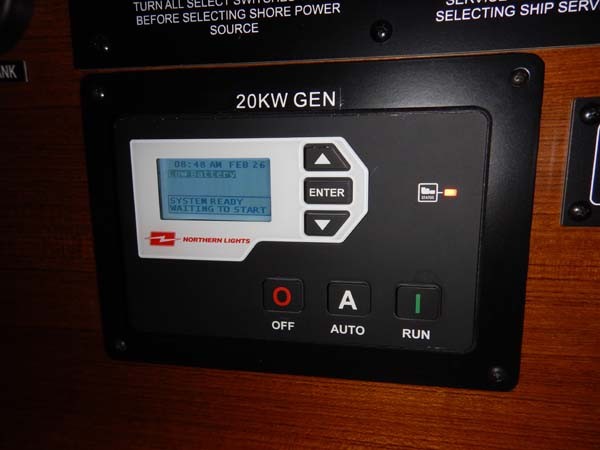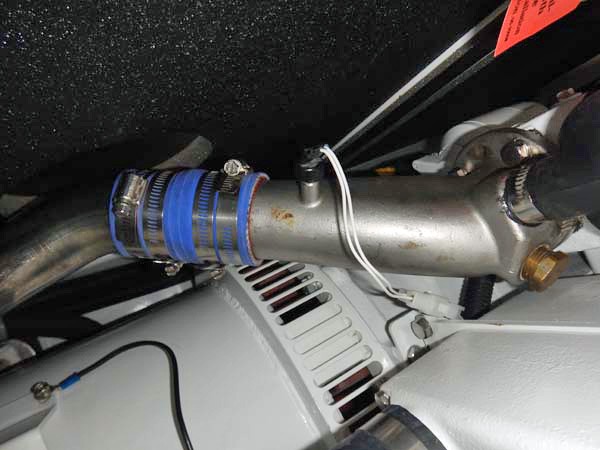Text and photos © 2019 Steve D’Antonio Marine Consulting, Inc.
From the Masthead
For those who don’t know it, Taiwan is a mecca for boat building and manufacturing of all sorts, everything from coffee pots and cookware to lathes and CNC routers are made here. As I drive and ride through the country I marvel; it seems to be one giant workshop. Yacht building is clustered around Kaohsiung, where you’ll find yards building Fleming, Outer Reef, Kadey Krogen and Horizon to name a few, as well as Tainan, where several Nordhavn models are built by the Ta Shing yard.
I’m sitting on a train (I love trains) traveling between Kaohsiung and Tainan as I write this month’s column. I’ve been to Taiwan scores of times and consider every trip both an adventure and learning experience. Although generalizations can be dangerous, I’ve visited and worked here often enough to safely draw some conclusions. The Taiwanese people possess a variety of attributes, they are industrious, honest, and helpful to a fault, especially to foreigners; while crowded, their society is among the safest and most harmonious I’ve ever visited, I’m fairly certain in ten years of visits I’ve never heard a voice raised in anger.

A wooden cell phone charging box located in a regional Taiwanese train station. There’s a sign above it, in English and Chinese, that lets passengers know that loaner cell phone chargers are available upon request.
Taiwan’s mass transit system is a marvel of efficiency and engineering. Trains are fast, modern, clean, affordable and easy to navigate. The high-speed train travels from Taipei in the north to Kaohsiung in the south, in about two and a half hours. All three airports I’ve used, Taoyuan, and Songshan, located in the northern capital of Taipei, and Kaohsiung located further south on the island, are modern, clean and efficient. Taxis are inexpensive, and clean and their drivers are scrupulously honest, you can hold out your hand with coins and they’ll take the proper fare; they expect no tips and they make it their mission to get you to your destination as fast has humanly possible. While few speak English, most have translation apps on their phones, making communication relatively easy, but I’ve learned it helps if you have your destination written in Chinese.

Most Taiwanese train stations have a safety officer, he or she will politely remind you to step back if you get too close the platform edge.
While hiking in a national park a few days ago I got caught in a downpour. A Taiwanese family (three generations, that’s common) was walking alongside me, they quickly donned rain gear and brought out umbrellas. I had a raincoat and rain pants, as well as a wide brimmed water proof hat, but no umbrella. A young girl with the family warned me to put my cameras away quickly lest they get wet, she then inquired if I had an umbrella. When I said I didn’t, she spoke to her mother in Chinese, then said to me, “My mother said you must take one of our umbrellas”. I refused of course, but she and her mother were insistent; I eventually saw this fight would be futile, they weren’t going to stand for me getting rained on. At the end of the walk the deluge turned to a drizzle, I tried to return the umbrella to them but they refused, saying, “You keep, they are very cheap in Taiwan”.

The famous narrow-gauge Alishan Forest Railway.
Finally, if you like Chinese food, Taiwan’s variety is nearly endless, on every trip I encounter something new, like the century eggs I came across a few days ago at a market in Fenqihu. Raw eggs are prepared by coating them in a mixture of clay, wood ash, calcium, rice husks and salt, and then aged for several months. The taste is…unique.

While they aren’t really 100 years old, these Century Eggs do look like they’ve been around for a while.
If you have the opportunity to travel to Taiwan, for a boat building project or any other reason, I strongly recommend to take advantage of it, I have no doubt it will be a memorable experience.
This month’s eMagazine feature article covers the subject of auto-starting generators. I hope you find it both interesting and useful.
Automatic Generator Starting

There should be a clear indication to those aboard as to when auto-start is enabled, this image represents a good example.
It’s a common challenge for live aboard cruisers who frequently anchor out rather than spend time dockside; how do you keep the batteries charged, reefers cold and other critical systems running if you are away from the boat for more than a few hours? Until a few years ago there wasn’t an easy answer. Lately, however, more and more boat builders and vessel owners are taking advantage of the same generator automatic start technology that’s been used in homes and businesses for years, with a few modifications, and some important caveats.
Home standby generators are triggered by a power outage. When the power goes out, a relay starts the genset, allows it to warm up for a few minutes, and then actuates a motorized transfer switch, which does several things; It disconnects the house from the utility company supply so two power sources cannot be connected simultaneously (more on that below), a scenario that can lead to damaged equipment or a fire, and so the genset does not back feed the utility lines, potentially electrocuting an utility repair person, and it connects the genset’s output to the home’s circuit breaker panel (or some part of it, many systems are designed to operate critical, but not necessarily all, gear).
It’s worth reiterating, accidentally connecting the generator to a shore power/utility company source, thereby causing a “crash parallel” with the public utility, can have disastrous consequences. A breaker won’t react quickly enough to prevent mechanical and electrical damage to the engine. If the generator is running, it would not be unusual to break a connecting rod and eject it through the engine block and sometimes through a tank or hull.

All gensets should have local start and stop, however, those equipped with an auto-start system must also have a lock-out feature, that when actuated will prevent the genset from starting until actively reset or released.
Aboard a boat the scenario is similar, however, the trigger is typically house battery voltage rather than loss of shore power; if the vessel is at anchor it already has no shore power (although it can be set up to start if shore power is lost for vessels that are dockside and unattended). At this stage it gets a little tricky, if all the owner wants to do is charge batteries, the triggering signal can be sent from an inverter/charger when it reaches a low voltage threshold. With that signal the genset starts, and after a short delay the inverter/charger begins charging the batteries. Once the charger switches to float mode, indicating the batteries are fully charged (and load therefore is very low), a stop signal is sent to the genset. That approach is relatively straight forward, and importantly, with some exceptions (see below*) it requires no transfer switch.
*Depending on the size of the inverter bank and the idle or light load current, the AC load may be sufficient to cause a huge D.C. spike from the automatic voltage regulator (AVR) to the exciter field, destroying the AVR and rotating rectifier diodes on the back of the main rotor. Starting or stopping a generator with an AC load connected is strongly discouraged by just about every manufacturer.
If, however, you wish to supply power from the genset directly, i.e. not via an inverter and batteries, to any other AC gear, such as reefers, or HVAC, the hardware must mimic the home design, using a transfer switch, one that does not connect loads to the genset until it has started, and disconnects loads before the genset shuts down. It’s worth noting, an inverter/charger cannot invert and charge simultaneously, so if it is doing the charging, while that’s happening it’s not inverting, so AC loads will be left without power. If you use a stand-alone charger in this role, instead of an inverter charger, most have no delay, so they begin applying a load to the genset before it has started.
Why the issue with loads being present at start up and shut down? Typically, when a genset is starting, or is in the process of shutting down, its voltage output is very low. That low voltage can trigger very high current or amperage for inductive, or motor loads like refrigeration and air-conditioning compressors; high current and low voltage can cause damage to both genset and electric motors/compressors, and as such that scenario, a load being present at start up or shut down, must be avoided at all costs.
Dyna Gen’s TG410 and Northern Lights’ TSC generator controllers incorporate provisions for “warmup” and cool down that can send a battery voltage signal from the auxiliary connector to a relay controlling a load transfer contactor or switch. When properly configured, the signal is energized 120 seconds after the start command is received from either the external device or the Run button on the controller and de-energized when the Run command is turned off, but the generator’s engine is allowed to run an additional 120 seconds to cool down. This would be the minimum acceptable functionality of any control devices used in auto-start generators.

Newer smart genset controls often incorporate auto-start, as well as warm up and cool down timing features.
Beyond that, there are other issues to consider where auto-start is concerned. The first involves the safety of those accessing the genset, whether vessel owner or service personnel. Recently, while inspecting an auto-start equipped genset, it spontaneously started moments after I’d removed the enclosure cover. It startled me to say the least. Gensets equipped with auto-start must be equipped with conspicuous placards both on the enclosure and on the genset itself, and they must be equipped with a local lockout, i.e. a means of preventing it starting, which is located at the genset. Additionally, auto-start gensets should be equipped with an audible and visual warning that is activated before starting; this can be wired to the glow plug circuit, thereby alerting those in the area that start up is about to occur.
Finally, if you opt for the auto-start route, and you intend to allow the genset to start while no one is aboard, you must be aware of the associated risks. What happens if the engine or exhaust system overheats? Ideally, most marine gensets will shut down automatically. But what happens if that system malfunctions, and it doesn’t shut down? That could be a catastrophic even if the vessel is occupied, however, there’s a chance that it would be noticed before a fire started. Or, what happens of the vessel is hauled and the auto-start is not disabled, allowing the genset to start with no seawater for cooling?

Wet exhausts require a continuous flow of cooling water. If it’s lost, even for a few seconds, the exhaust system hose, plastic and fiberglass components will quickly overheat; in a worst case scenario it could catch fire.
In closing, when I shared a draft of this column with my colleague and friend Bob Senter of Northern Lights, he said the following, “Steve, what do you think of a recommendation to annually “prove” the functionality of safety shutdown switches used in auto-start equipped machines? A non-functional exhaust elbow temperature, or seawater flow, switch could create the conditions for an exhaust system fire or worse if seawater was lost for any reason. In my opinion, auto-start machines on recreational vessels without manned engine rooms present a plethora of hazards that haven’t been thoroughly explored and addressed.
When Boeing relied on one angle of attack sensor for the 737 MAX MCAS system (unless the buyer paid extra for programming the second sensor with a “disagree” light) it became a recipe for disaster. Perhaps TWO exhaust temperature switches might be a prudent minimum for recreational auto-start machines with seawater cooled exhaust systems.”

Most gensets incorporate automatic shutdown protection in the event of coolant and exhaust overheating, as well as low oil pressure. If any of these fail to operate while the genset is running the results could be costly and dangerous, particularly in the case of a failed high wet exhaust temperature shut down switch.
As usual, Bob makes some excellent points, ones well worth considering. Genset auto-start is not a set and forget proposition, whether you are a boat owner or builder, you must be aware of, and willing to accept, the risks associated with internal combustion machinery that can start spontaneously and operate while unattended.


